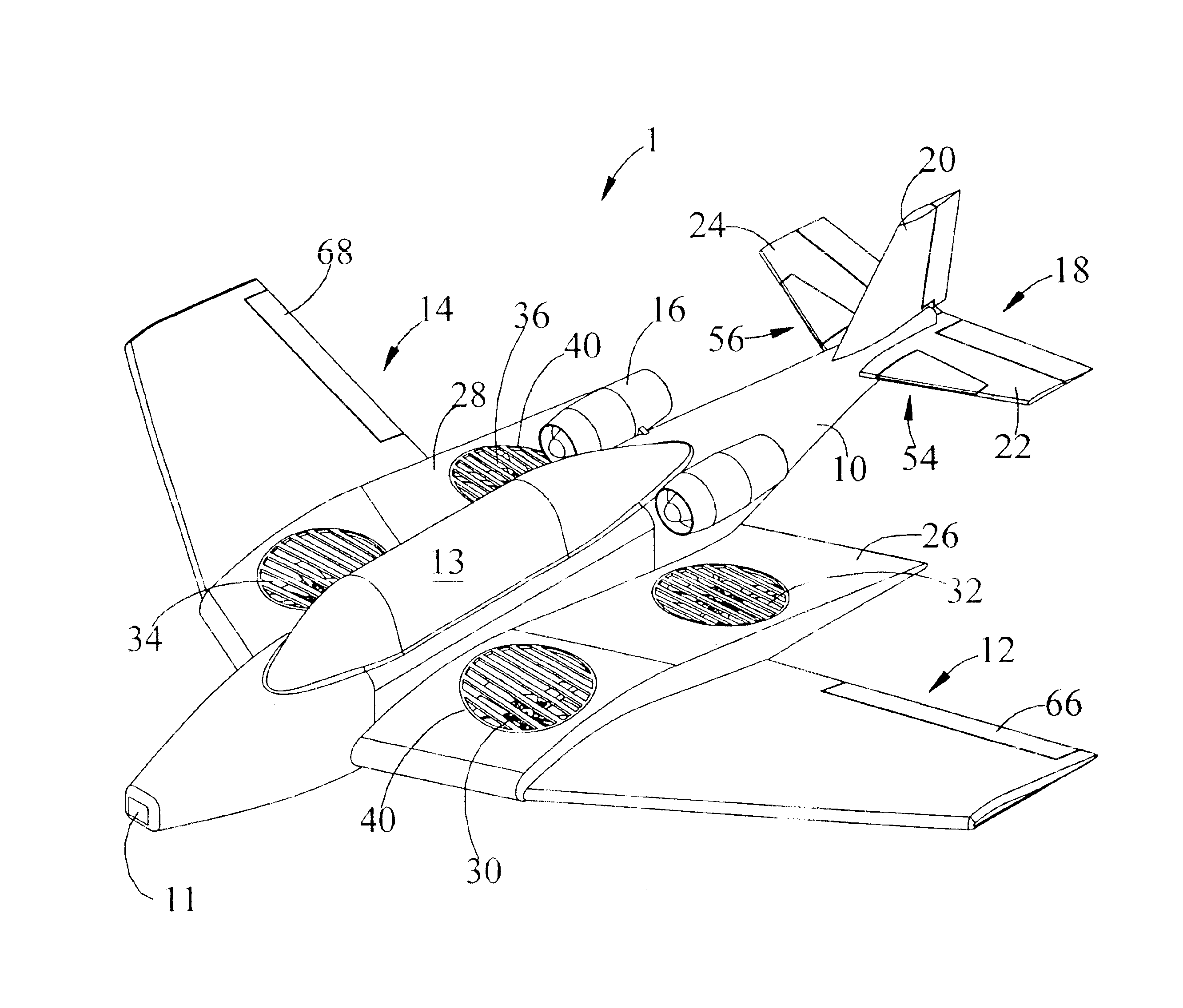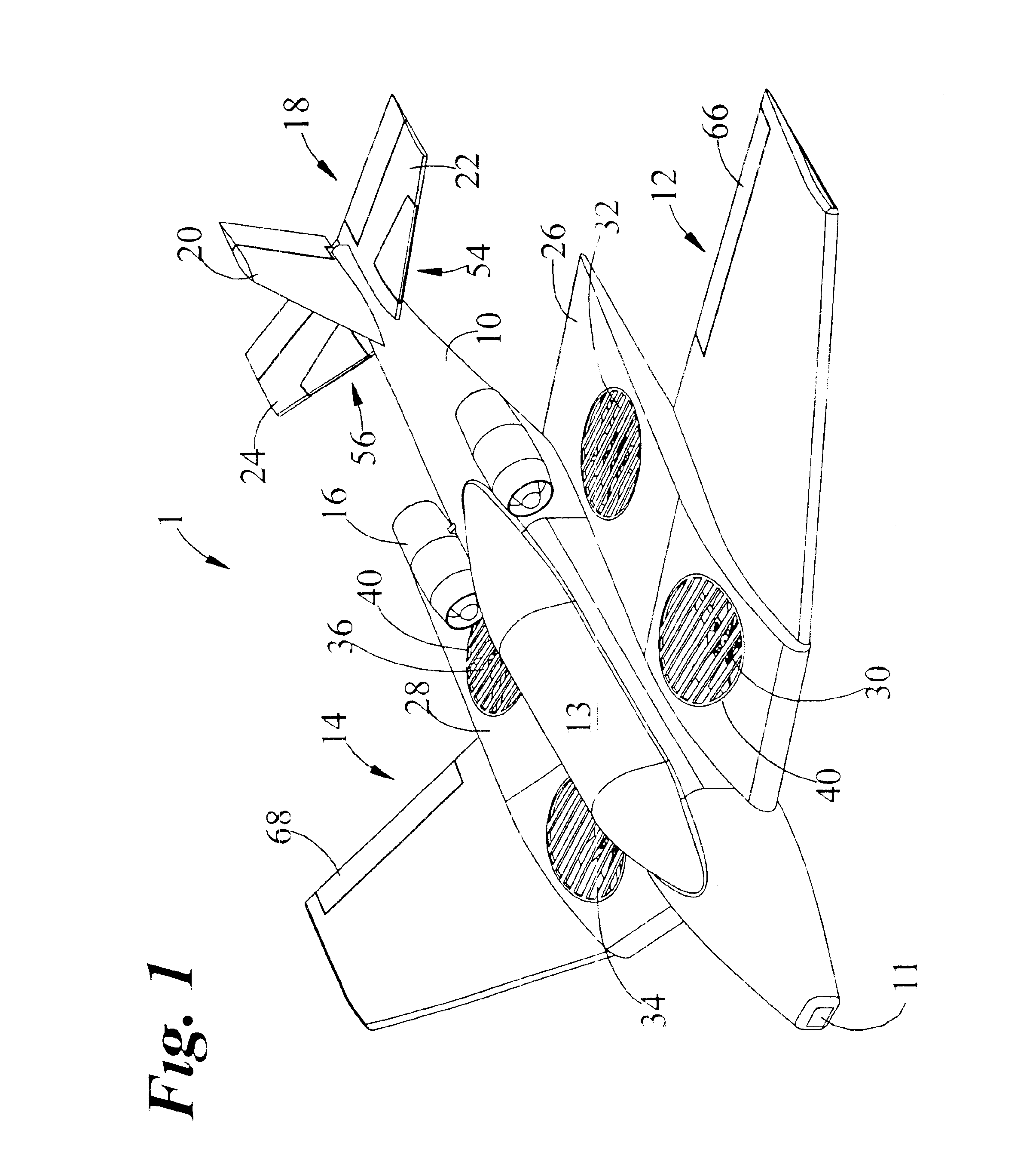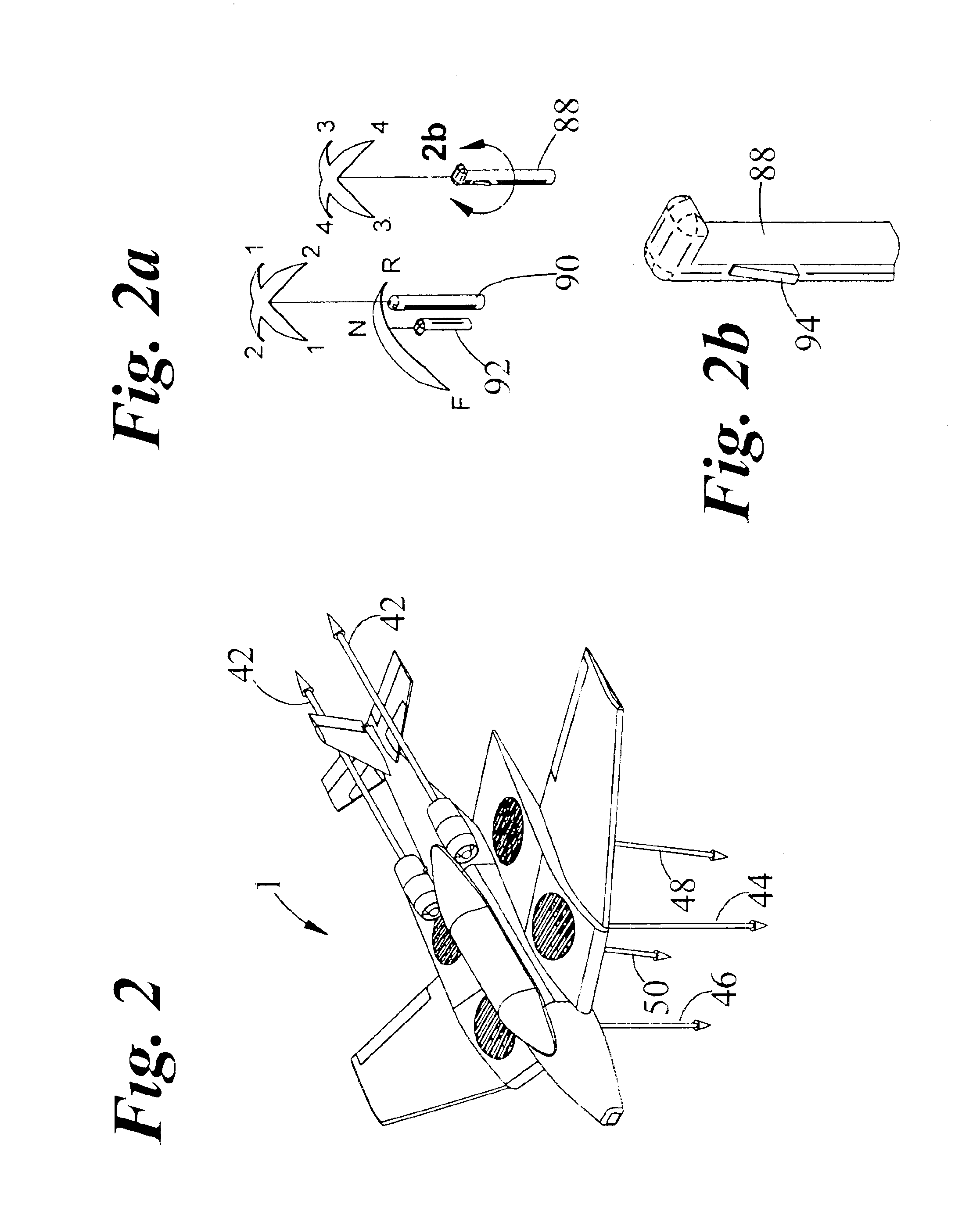Vertical take-off and landing aircraft
a vertical take-off and landing technology, applied in the field of aircraft, can solve the problems of reducing the lift of the aircraft, affecting so as to improve the stability of the hover
- Summary
- Abstract
- Description
- Claims
- Application Information
AI Technical Summary
Benefits of technology
Problems solved by technology
Method used
Image
Examples
Embodiment Construction
With reference now to the drawings, and particularly to FIG. 1, there is shown a perspective view of a VTOL aircraft 1. The VTOL aircraft 1 includes a fuselage 10, a left wing 12, a right wing 14, at least one forward thruster 16, a horizontal stabilizer 18 and a vertical stabilizer 20. The left wing 12 extends from a left side of the fuselage 10 at substantially a middle thereof and the right wing 14 extends from a right side of the fuselage 10 at substantially a middle thereof. The at least one forward thruster 16 is preferably mounted to the fuselage 10, substantially behind the left and right wings. The horizontal stabilizer 18 includes a left horizontal stabilizer portion 22 and a right horizontal stabilizer portion 24. The left horizontal stabilizer portion 22 extends from a left side of the fuselage 10 at a rear thereof and the right horizontal stabilizer portion 24 extends from a right side of the fuselage 10 at a rear thereof. The vertical stabilizer 20 extends from a top o...
PUM
 Login to View More
Login to View More Abstract
Description
Claims
Application Information
 Login to View More
Login to View More - R&D
- Intellectual Property
- Life Sciences
- Materials
- Tech Scout
- Unparalleled Data Quality
- Higher Quality Content
- 60% Fewer Hallucinations
Browse by: Latest US Patents, China's latest patents, Technical Efficacy Thesaurus, Application Domain, Technology Topic, Popular Technical Reports.
© 2025 PatSnap. All rights reserved.Legal|Privacy policy|Modern Slavery Act Transparency Statement|Sitemap|About US| Contact US: help@patsnap.com



